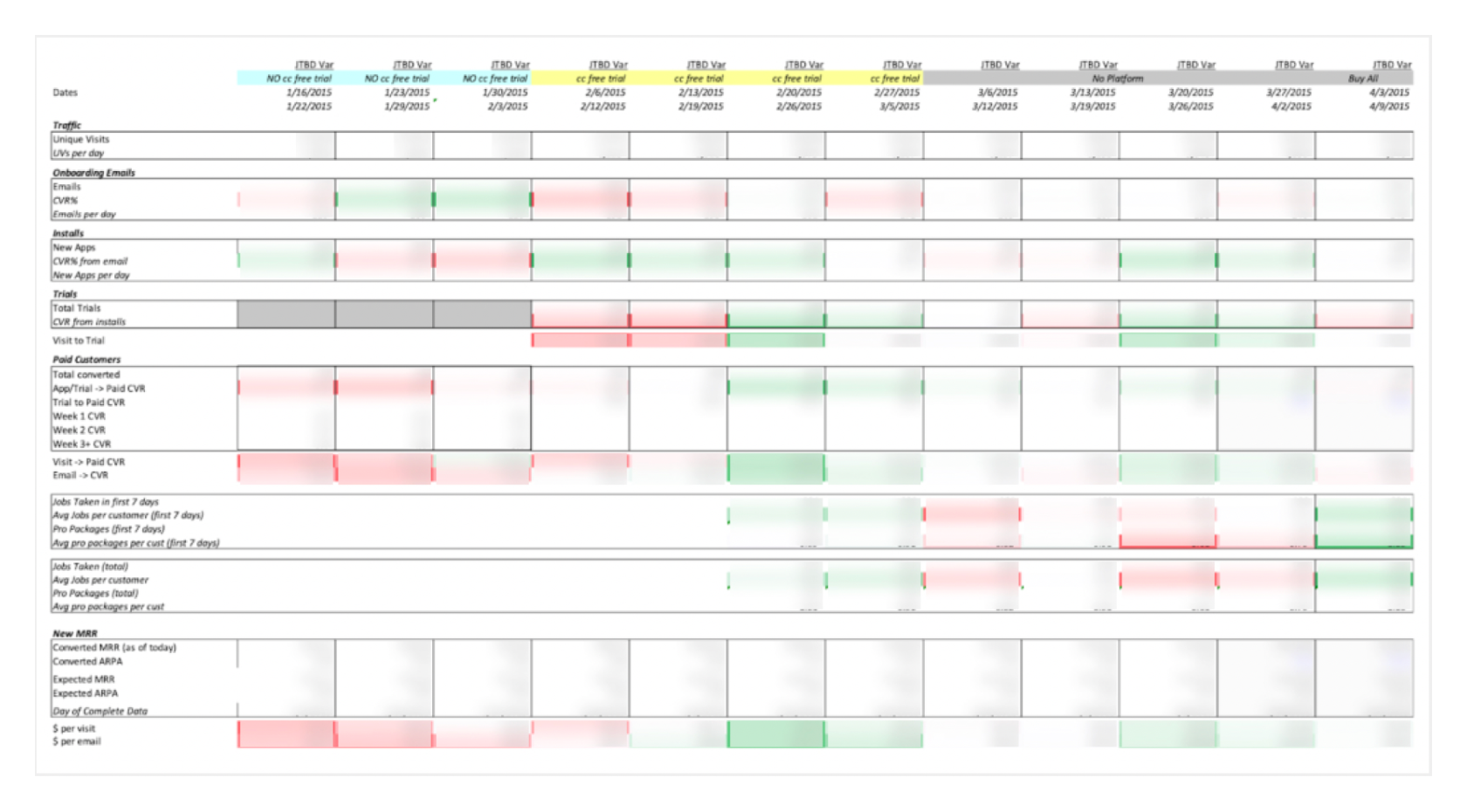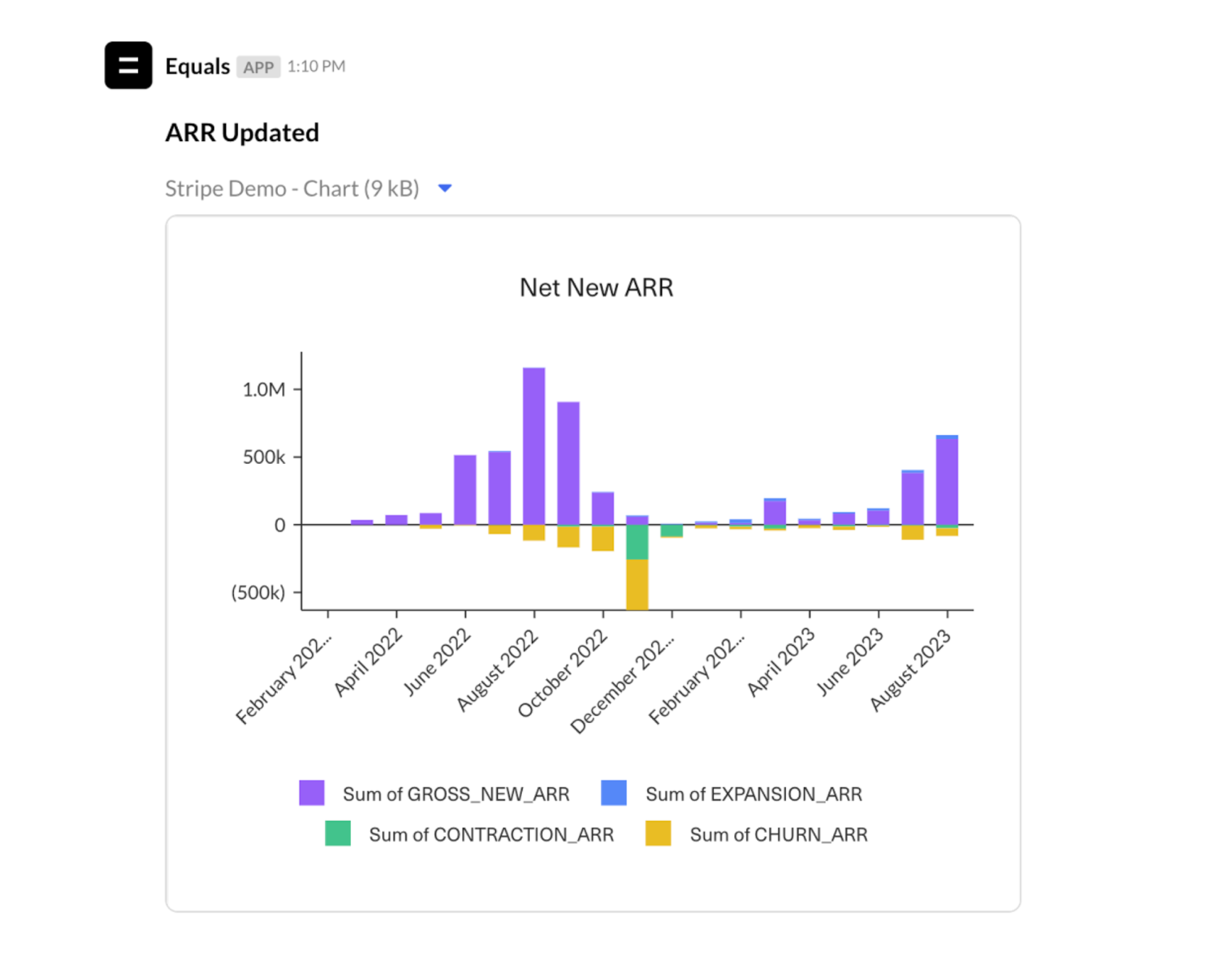The Guide to
SaaS Metrics
The Guide to
SaaS Metrics
Table of Contents
Operationalizing Metrics
All too often, operators spend an inordinate amount of time setting up reporting and ensuring its accuracy but not nearly enough time thinking through how to ensure others make the most of that information.
Operationalizing your metrics is where the rubber meets the road. It matters almost more than the metrics themselves. Without a cadence for ensuring stakeholders consume the right metrics at the right time, your business will stay at a standstill. Operationalizing your metrics will ensure everyone is steering towards the same goals with a clear view of what they can do to move the needle.
Here are a few principles to consider when setting up your reporting system.
Looking at the right metrics at the right time
Your startup runs on decisions. These decisions span various time horizons—from daily operational choices to long-term strategic planning. To ensure that these decisions are data-informed, you'll need to establish a cadence for reviewing metrics that aligns them with the corresponding decision timeline.
Metrics reviewed daily should be tied to tactical goals that frontline teams can influence quickly. They should also be incredibly easy for your team to interpret—to articulate why they matter, how they're calculated, and what directional changes mean for the business and their day-to-day activities. Think simple volume and count-based metrics like MQL volume, number of sales calls made, or the value of your current pipeline.
You could also look at metrics that are proxies or leading indicators for higher-level goals and projections. Rather than looking at retention every day, for example, consider monitoring the number of customers who have reached their third or fourth billing cycle. This is a tangible metric that can be adjusted within a 3-4 month timeframe, whereas retention is a blended metric across your entire customer base that would require multiple customer cohorts to shift.
For metrics reviewed weekly, we've found it useful to keep the executive team in sync with a weekly check-in. At Intercom, we'd walk the entire executive team through the following metrics each Friday:
- All our funnel metrics
- The status of every ongoing experiment
- Our ARR Build, its components, and a forecast

This check-in essentially reviews the entire business, bridging day-to-day activity (like your funnel movements and experiment results) with top-level goals (like your ARR). Doing this every week will ensure that you have a leading indicator for how you're tracking against monthly and quarterly ARR goals and are on the same page as a team about how to move them.
Note that this cadence will also vary by business stage. Early-stage companies benefit from more frequent updates because they are in a more volatile state and need to rapidly iterate before deciding on the right go-to-market strategies.
As companies mature and business operations stabilize, the focus may shift to more periodic updates. At the same time, even within a large company, smaller teams or new product lines might require a tighter feedback loop to respond appropriately to market shifts and internal dynamics.
Make your ARR your North Star
We recommend that you sit down with your executive team (or even with your board) to align on your business goals and how you'll need to move your operating metrics to get there. You'll want to understand the risks to the business if metrics move above or below a given threshold and then align on the tradeoffs you'll accept to move those metrics.
This often starts with setting Annual Recurring Revenue (ARR) growth targets. Every business question ultimately points back to the same things: Is this a long-term profitable thing for us to do? Is there a measurable return on investment over some time horizon? The best way to make sure every decision you and your team make meets those criteria is to tie all your operational metrics back to your ARR goals.
You'll then use ARR goals to set targets for downstream metrics. This requires you to reverse engineer your high-level goals and cascade those down to the lowest level of detail—a tactical target that your frontline "boots on the ground" can act against.
For example, set user engagement metrics for the Growth team based on how that correlates with a customer likely to pay you (Gross New and Expansion) over a longer time horizon (Retention).
Working through these trade-offs establishes a connection between your frontline metrics and why they matter (your ARR). Otherwise, you risk creating a "more is better" culture, and you'll find operational leads repeatedly arguing for more budget without grounding those asks in the context of goals and tradeoffs. "I need less budget", said no VP ever. Amirite?
Deliver metrics where your team works
We build dashboards because we assume people will log in regularly to view them. All too often, they don't. People are lazy, busy, or both. No matter how important a metric is, days are quickly consumed by a neverending to-do list—and a metric that's stuck behind a login wall will quickly fall to the bottom of that list.
The fastest way to ensure your data is consumed is to deliver it where people are already working. Send key reports daily via email or internal chat. Make those metrics immediately consumable, no logins required. This will enable your team to develop the habit of checking those metrics regularly and making small, consistent changes every day.
